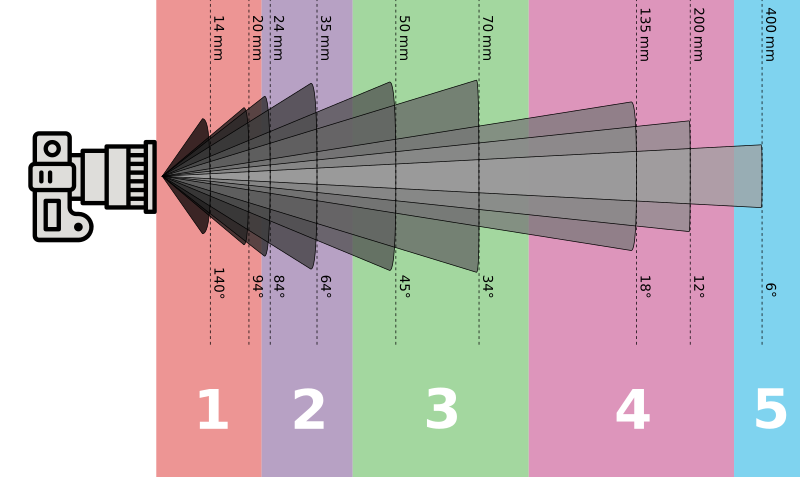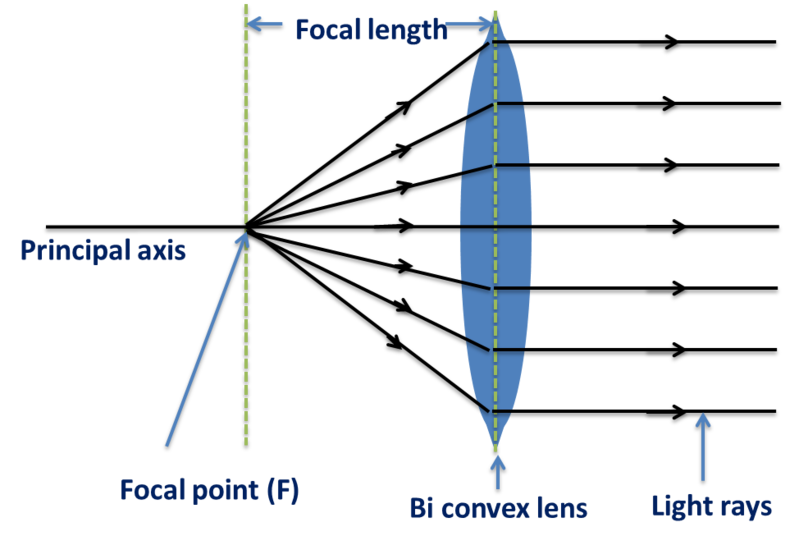Focal length is a fundamental concept in photography that greatly influences the outcome of your images. Whether you’re a novice photographer or a seasoned professional, grasping the details of focal length can enhance your ability to capture compelling and impactful photos.

What is Focal Length?
Focal length is the distance between the lens and the image sensor when the subject is in focus. It is usually measured in millimeters (mm) and determines the field of view and magnification of the image. Lenses are often classified by their focal lengths, which can be broadly categorized into three types: wide-angle, standard, and telephoto.
Magnification and Compression
Focal length plays a crucial role in determining the magnification and compression of a lens. A longer focal length means greater magnification of distant elements and compressed the background more with the foreground.

For example, if you’re photographing a dancer at a distance, using a 16mm wide-angle lens, it will make the dancer appear tiny in the frame (e.g. more areas of foreground and background). However, switching to a 400mm telephoto lens will significantly magnify and compress the dancer background, making it appear much larger in your photo (e.g. full figure of the dancer turns into head to throat areas only and subtracting more foreground and background). A telephoto lens functions like binoculars, magnifying distant objects. In contrast, a wide-angle lens makes distant objects appear even smaller.
Wide-Angle Lenses
Wide-angle lenses have short focal lengths, typically ranging from 10mm to 35mm. These lenses provide a broad field of view, making them ideal for landscape, architecture, and interior photography. They allow you to capture expansive scenes and emphasize the spatial relationship between objects. It often resulting in images with a sense of depth and perspective distortion.
Standard Lenses
Standard lenses, often referred to as normal lenses. Here the focal lengths fall within the range of 35mm to 70mm. A 50mm lens is considered the standard or normal lens for full-frame cameras because it closely replicates the field of view of the human eye. These lenses are versatile and suitable for various photography genres, including portraits, street photography, and general-purpose shooting.
Telephoto Lenses
Telephoto lenses have long focal lengths, typically starting at 70mm and extending beyond 300mm. These lenses offer a narrow field of view and significant magnification, making them ideal for wildlife, sports, and portrait photography. Telephoto lenses allow photographers to capture distant subjects with clarity and isolate them from the background. It creates a shallow depth of field and beautiful bokeh effects.

The Impact of Focal Length on Composition
Focal length significantly impacts how you compose your images. It influences the perspective, depth of field, and the relationship between the subject and the background.
Perspective
Wide-angle lenses exaggerate the sense of depth in an image. It makes the objects in the foreground appear larger and more prominent compared to those in the background. This perspective distortion can be creatively used to emphasize certain elements in your composition. On the other hand, telephoto lenses compress the perspective. It makes the objects at different distances appear closer together. This effect is often used in portrait photography to create flattering images with a natural background blur.

Depth of Field
Depth of field (DOF) refers to the range of distance within a photo that appears acceptably sharp. Wide-angle lenses typically have a greater depth of field, keeping more of the scene in focus from foreground to background. Conversely, telephoto lenses have a shallower depth of field. It isolates the subject and creating a pleasing out-of-focus background, which is especially desirable in portrait photography.
Subject-Background Relationship
The focal length also affects the perceived distance between the subject and the background. Wide-angle lenses make the background appear farther away, which can be useful for environmental portraits where you want to include more context. Telephoto lenses, by contrast, bring the background closer, which can help in creating more intimate and focused portraits by blurring the background and making the subject stand out.
Choosing the Right Focal Length
Selecting the appropriate focal length depends on various factors, including the type of photography you’re engaging in, the subject, and the desired composition. Here are some tips for choosing the right focal length:
- Landscape Photography: Opt for wide-angle lenses (10mm-35mm) to capture expansive scenes and emphasize depth.
- Portrait Photography: Use standard or short telephoto lenses (50mm-135mm) to achieve flattering compositions with a shallow depth of field.
- Wildlife and Sports Photography: Telephoto lenses (200mm and above) are essential for capturing distant subjects with precision.
- Street Photography: Standard lenses (35mm-50mm) are versatile for candid shots and capturing everyday life without distortion.
Conclusion
Understanding focal length and its impact on your images is crucial for mastering photography. By choosing the right focal length for your subject and composition, you can enhance your storytelling and create visually compelling photographs. Experiment with different lenses and focal lengths to discover their unique characteristics and how they can be harnessed to achieve your creative vision.
